

When we first came to Japan, we wanted to experience tea ceremony. It sounded mysterious and intriguing. Now that we have lived in Japan for a year, we have experienced tea ceremony again and again. However, usually we experience a fairly informal version of tea ceremony. Ai, our wonderful Japanese teacher, took us to a formal tea ceremony that demonstrated why it takes years and years and years to master this seemingly simple art.
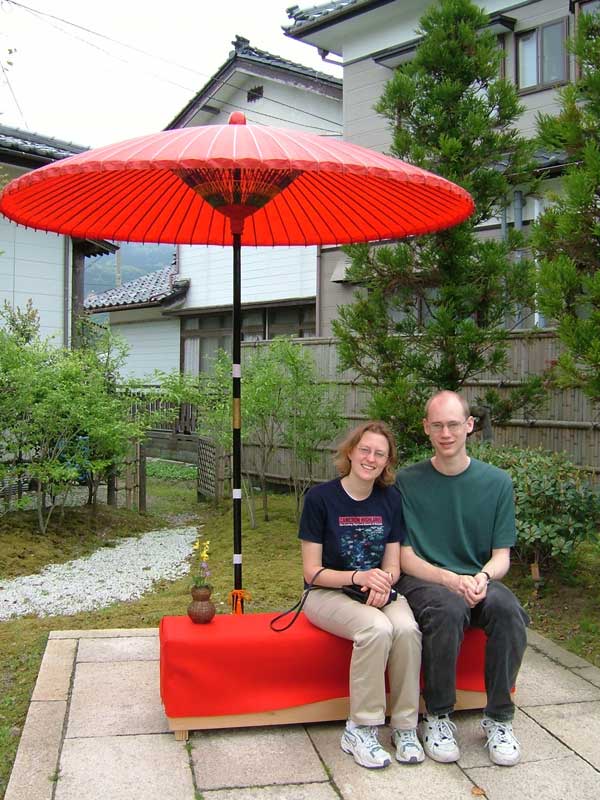
Here we are under a traditional red umbrella. This is part of an old garden that surrounds the tea ceremony area.
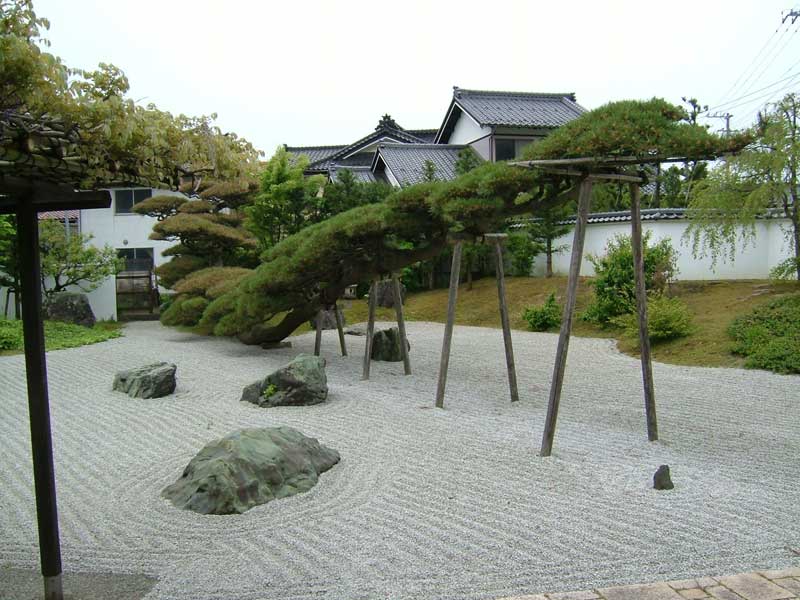
Here is the other side of the Zen garden. There are several interesting features. The rock garden is raked to create the various patterns. The tree-thing that looks like it is on crutches is actually very famous and very old. It has been deliberately sculpted to grow at an angle.
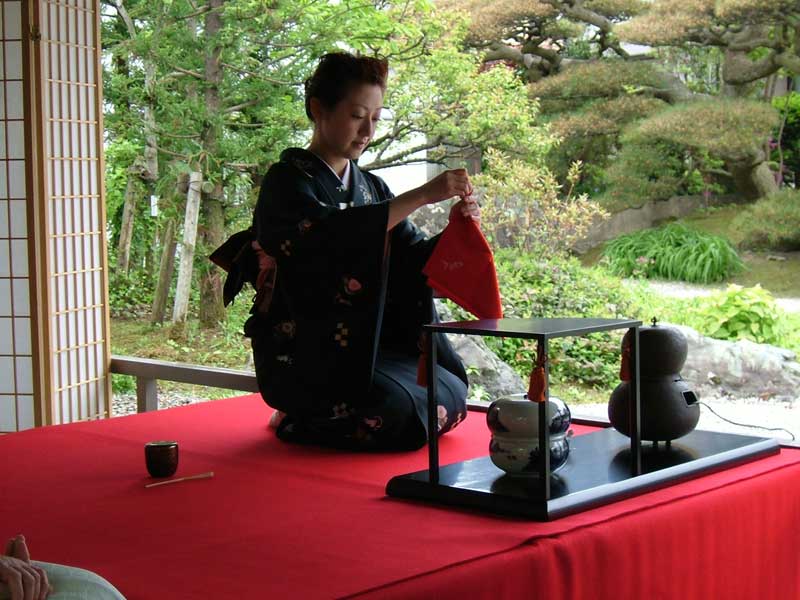
We finally made it in to the tea ceremony area itself. This was the last time a local master was performing the ceremony. However, the master sat in a chair on the left and her top apprentice made a small quantity of tea. This tea was not actually drank by anyone (or even finally made?) and when the time had come, tea was brought out from behind the stage area. One of the first steps in the tea ceremony was an elaborate ritual of folding and refolding a large cloth napkin that was kept in the obi (sash) of her kimono. For each step (wiping the spoon, etc.) an elaborate series of folds was used so the proper part of the cloth napkin was positioned for the task. The napkin was probably folded and refolded at least 50 times during the ceremony.
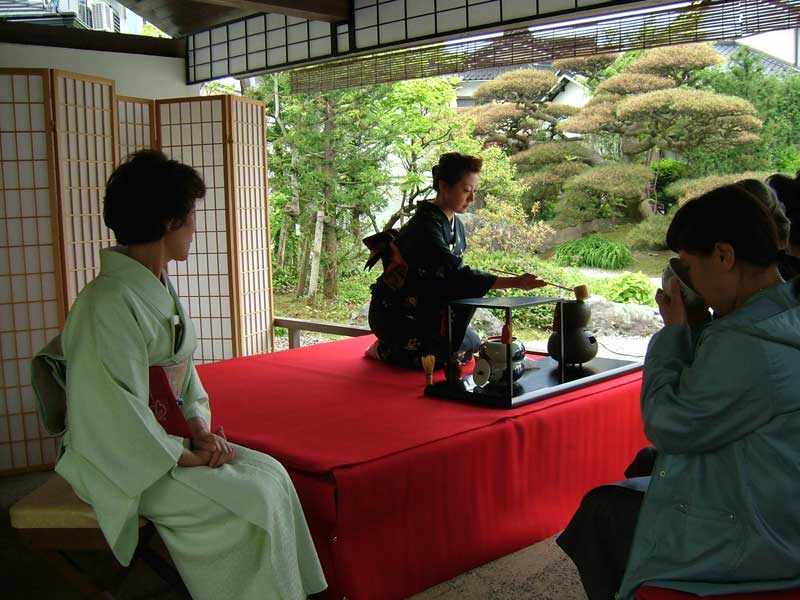
This shows the master on the left and the apprentice on the right.
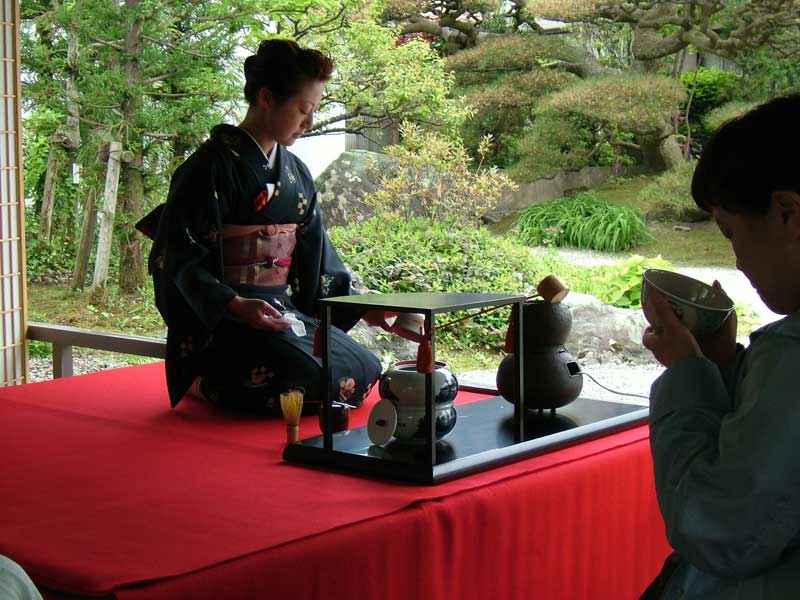
Here, the apprentice is doing through the motions to make the tea.
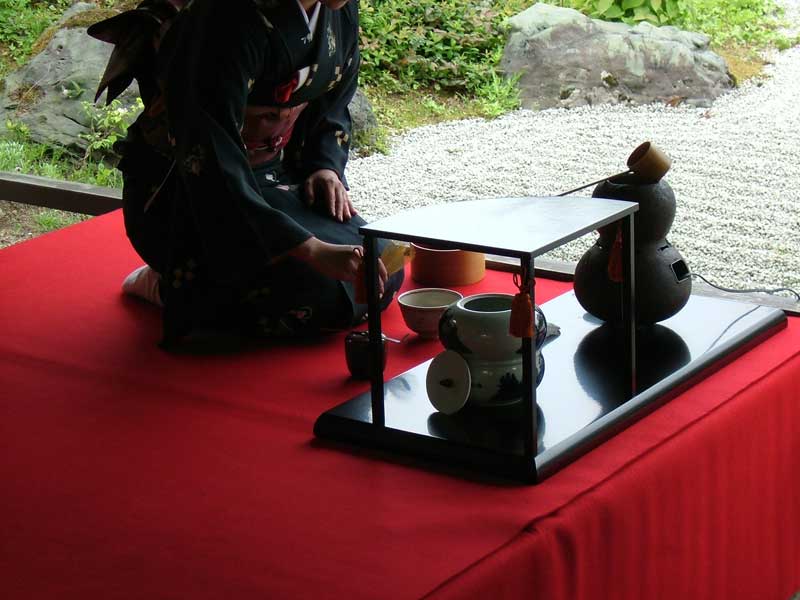
Here is a close up of her using the whisk. After the powedered tea is put in a cup and hot water is added, the tea is whisked briskly so it acquires a foamy top layer.
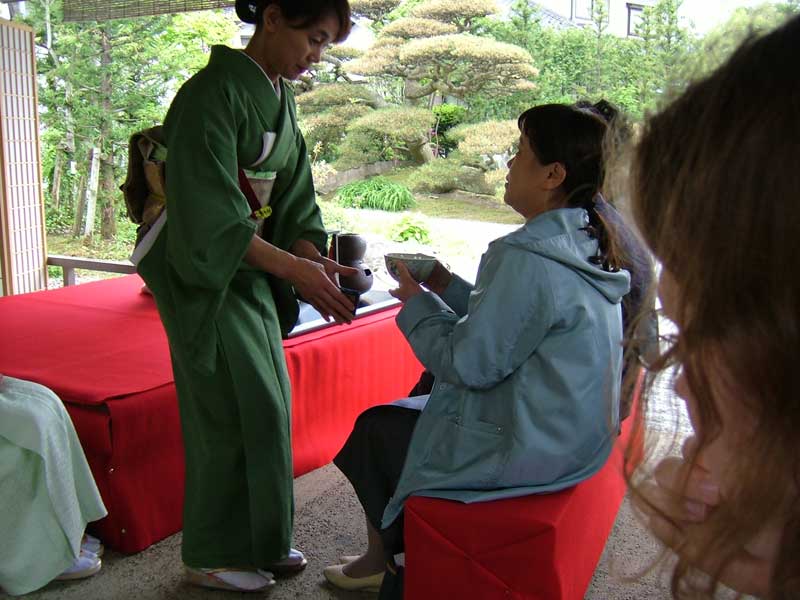
Before any hot water was actually put in the tea on stage, we were brought tea. The women in the front bench closest to the stage are also tea ceremony specialists and have the seat of honor. They were served first. Before drinking the tea (called matcha), one eats a sweet. These sweets are made from sweet bean paste and come in various shapes and colors depending on the ceremony. Freshly made sweets are actually tasty but store-bought ones are not. The sweet is used to counter the bitterness of matcha. Putting sugar or milk into the matcha is not possible and even if one found some sugar, it would be extremely barbaric to do so. However, Kim did see a person drop their sweet into the matcha and swirl it around, presumably not realizing this was taboo. It was quite funny. Also, during the ceremony, one of the guests of honor actually dropped her sweet on the ground! Gasp!
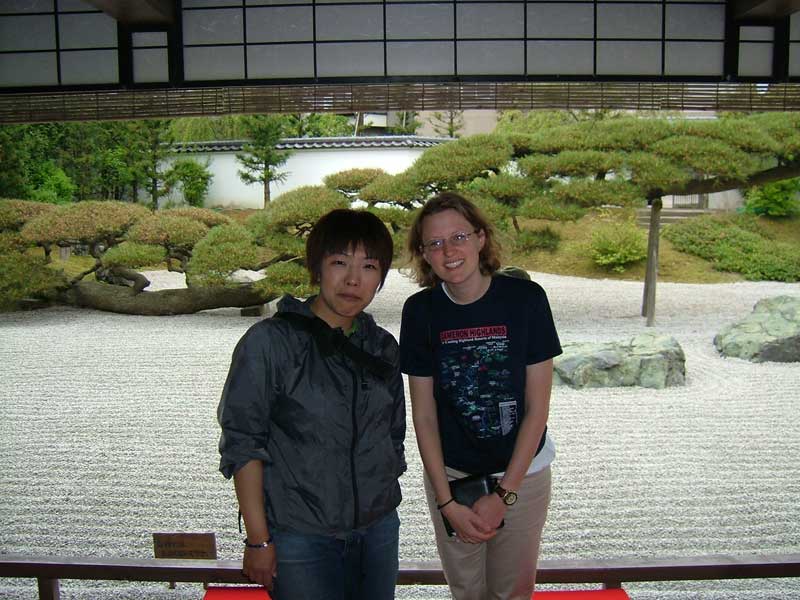
Here is an after-ceremony picture of Kim and Ai.
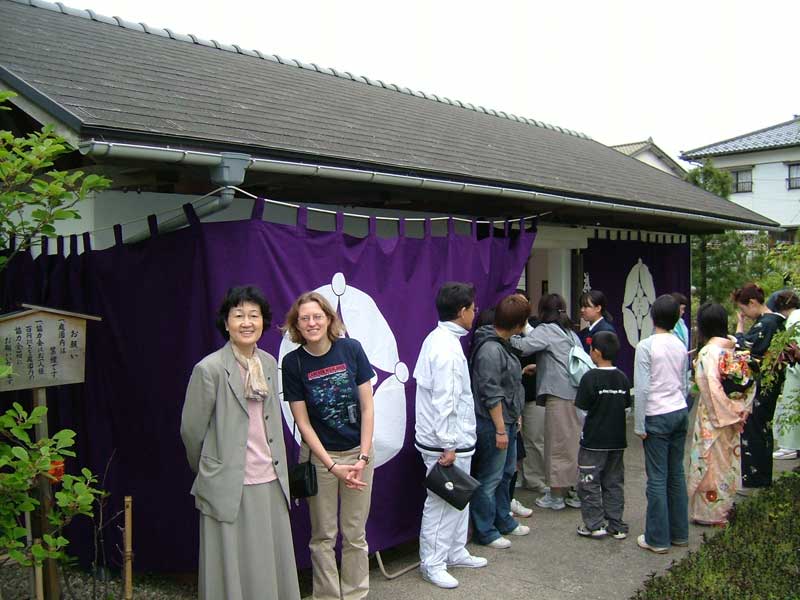
Here is another after-ceremony picture of Kim and Shirahata sensei, a teacher Peter works with, who advises tea ceremony club at the school.
It was very interesting to see tea ceremony and the elaborate steps required to prepare the tea. Kim has decided she never wants to learn this ceremony. Peter agrees.